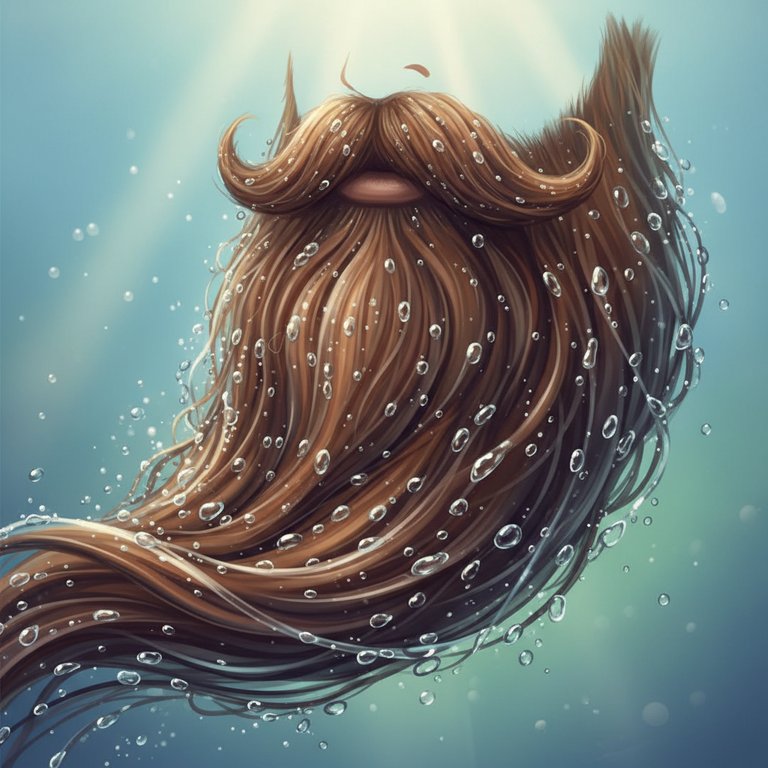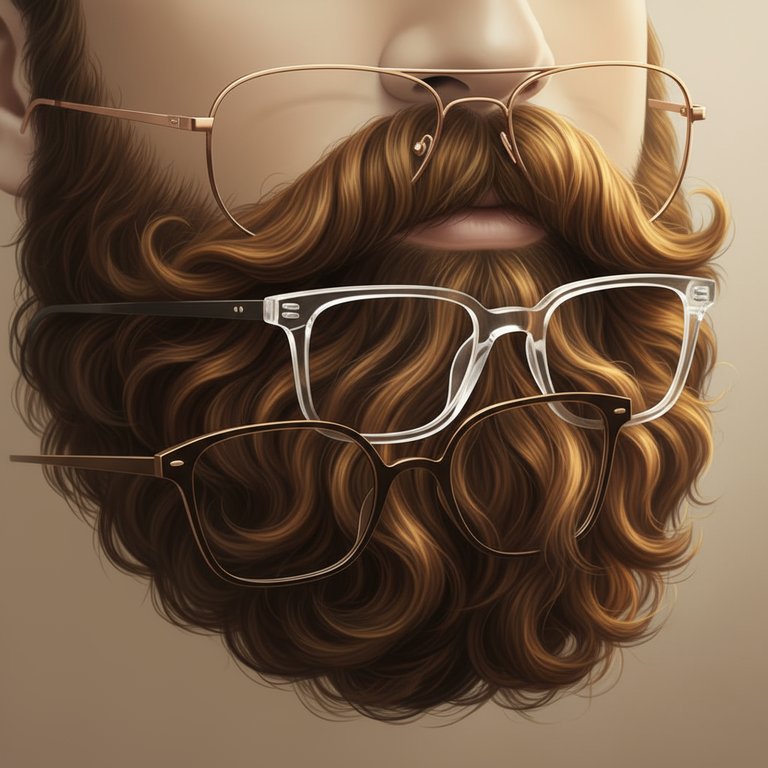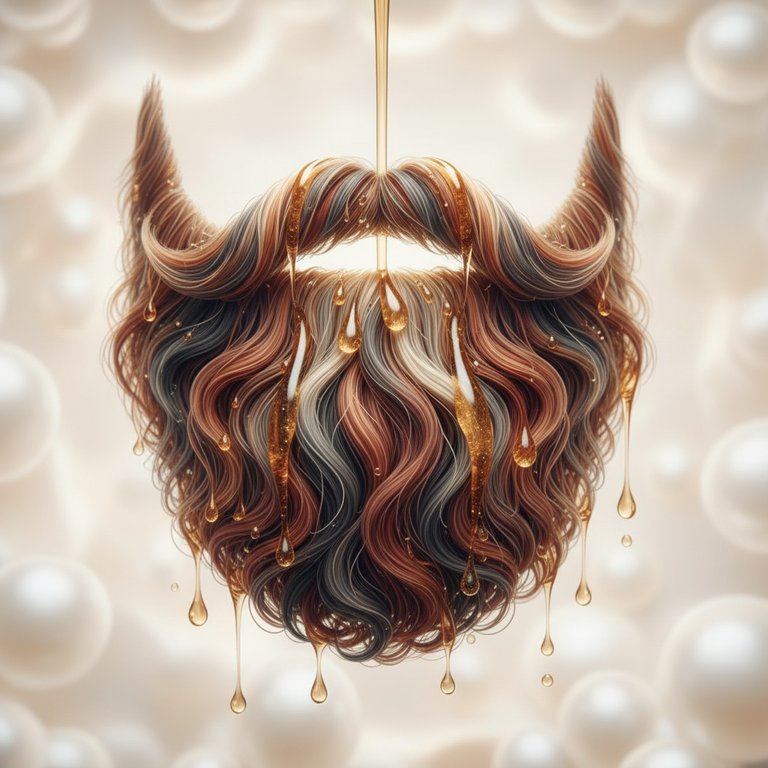Hey beard fam! Ever looked at your magnificent mane in the mirror and thought, "Man, this thing is heavy"? You love the length, the epic flow, but sometimes it just feels... a bit much. Maybe it's weighing you down, making styling a chore, or just feels too dense. The good news? You absolutely can reduce that bulk and lighten your beard without sacrificing a single inch of that hard-earned length. It's all about smart grooming, and I'm here to spill the beans on how to achieve that lighter, airier feel while keeping your glorious length intact.
Understanding "Heavy" vs. "Long" Beard
First things first, let's clarify what we mean by a "heavy" beard. We're not talking about its actual weight on a scale, of course! A heavy beard refers to its density and bulk. It's that feeling when your beard is so thick and full that it might:
- Feel hot or cumbersome.
- Be difficult to comb through.
- Lack movement and flow.
- Make your face appear wider than you'd like.
- Be challenging to style into specific shapes.
A long beard is simply a beard with significant length. You can have a long beard that's well-managed and light, or a long beard that's dense and heavy. Our goal today is to transform the latter into the former!
The Art of Beard Lightening: Techniques Explained
This isn't about chopping off inches; it's about strategic removal of volume from within the beard. Think of it like pruning a bush – you remove inner branches to allow light and air, but the overall shape and height remain.
1. The Power of Thinning Shears
This is your secret weapon, my friend. Thinning shears (sometimes called texturizing shears) look like regular scissors but have teeth on one or both blades. They don't cut a solid line; instead, they remove a portion of the hair with each snip, creating a softer, lighter effect.
- How they work: When you close thinning shears, only some hairs get caught and cut, while others slip through. This instantly reduces bulk without affecting the outer perimeter or overall length.
- Where to use them: Focus on the underside and inner layers of your beard. Avoid using them on the very outer layer unless you're intentionally trying to create a specific textured look, as it can sometimes make the beard look wispy if overdone on the surface.
- Technique: Always start with dry, clean, and well-combed beard hair. Take small sections, lift them, and snip into the beard from the inside, never straight across. A few snips are usually enough for a section. Remember, you can always remove more, but you can't put it back!
2. Layering and Shaping with Regular Trimmers/Shears
Even without losing length, you can create the illusion of lightness and better flow through strategic layering. This involves cutting the hair at different lengths within the beard, much like a good haircut creates layers for movement.
- Under-trimming: If your beard grows very thick and uniformly from your jawline, the hair underneath can push the outer layers out, creating a very blocky, heavy look. Carefully using your regular beard trimmer (with a guard, of course!) on the hair underneath your jawline and chin can remove some of that foundational bulk without touching the visible length.
- Tapering: This technique involves gradually shortening the hair as it gets closer to your ears and neck. While it might slightly reduce length in those specific areas, it helps create a more natural, less "boxy" transition, making the overall beard appear lighter and more sculpted. Use a longer guard near the main beard body and gradually shorter guards as you move up towards the sideburns.
3. Strategic Combing and Brushing
This isn't a cutting technique, but it's crucial for maintaining a lighter feel. Regular combing and brushing with the right tools can help distribute your beard hair more evenly, prevent tangles that contribute to bulk, and encourage a natural flow.
- Wide-tooth comb: Essential for detangling without pulling.
- Beard brush (boar bristle is great): Helps to distribute natural oils and beard products, smooth the hair, and train it to lie in a desired direction, reducing puffiness.
Step-by-Step Guide to Lightening Your Beard
Ready to get started? Here's how I approach it to ensure maximum length retention and optimal bulk reduction.
Step 1: Prep Your Beard
Start with a clean, dry beard. Washing and conditioning will make the hair softer and easier to comb. Ensure it's completely dry before you start trimming, as wet hair can appear longer and denser than it actually is, leading to over-trimming. Comb your beard thoroughly, making sure all the hairs are flowing in their natural direction.
Step 2: Identify Heavy Areas
Stand in front of a mirror and examine your beard. Where does it feel the densest? Often, it's the sides, under the chin, or just below the jawline. Gently lift sections of your beard. See how thick it is underneath? Those are your target zones.
Step 3: Begin with Thinning Shears (The Gentle Approach)
This is where the magic happens.
- Take a small section of your beard, lifting it away from your face.
- Hold the thinning shears at a slight angle, about an inch or two into the beard from the outside.
- Make one or two snips. Do not snip repeatedly in the same spot.
- Comb the section out and assess. Does it feel lighter?
- Move to another dense area, repeating the process. Always work slowly and methodically. It's better to do a little, check, and do a little more, than to take too much off at once.
Step 4: Address Under-Beard Bulk (If Necessary)
If you have significant bulk underneath your jaw that's pushing your beard out, you can use your regular beard trimmer with a long guard (e.g., 10mm or 12mm) to carefully trim only the hair directly under your jawline and chin. This is about removing the foundation of the bulk, not the visible length. Be extra cautious here!
Step 5: Refine and Blend
After using thinning shears, comb your entire beard again. Look for any areas that still feel too heavy or look uneven. You might need to go back with the thinning shears for a few more strategic snips. The goal is a gradual, natural reduction in bulk.
Step 6: Style and Maintain
Once you're happy with the lightness, apply your favorite beard oil to moisturize and condition. Follow up with a good beard balm to help hold the shape and further reduce any stray hairs that contribute to a bulky look. Regular brushing will help maintain the new, lighter feel.
Personal Tips and Tricks for a Lighter Feel
- Go Slow: This is not a race. You can always take more off, but you can't put it back. Take breaks, step back from the mirror, and reassess.
- Invest in Good Tools: Sharp thinning shears make a huge difference. Dull tools can pull and damage hair.
- Angle Matters: When using thinning shears, cut into the beard, not straight across. This creates a more natural blend.
- Comb Frequently: Regular combing and brushing helps train your beard and prevents it from settling into a dense, unruly mass.
- Product Power: A good beard balm can help tame flyaways and give your beard a more sculpted, less "fluffy" appearance, contributing to a lighter look.
- Hydration is Key: Well-hydrated beard hair (from quality beard oil and conditioner) is healthier, softer, and often lays better, naturally appearing less bulky than dry, frizzy hair.
FAQ: Your Questions Answered!
How often should I use thinning shears on my beard?
It really depends on how quickly your beard grows and how dense it gets. For most guys, using thinning shears every 4-6 weeks is a good starting point. If you notice your beard feeling heavy again sooner, you can adjust. Always remember to go slow and be conservative.
Why does my beard feel so heavy even when it's not super long?
Density is often the culprit! Some folks just naturally grow a very thick beard with a high hair count per square inch. This can make a shorter beard feel just as heavy as a longer, less dense one. Genetics play a big role here, but strategic thinning can definitely help, regardless of length.
Can I use regular scissors to thin my beard?
Technically, you could, but I strongly advise against it if your goal is to lighten without losing length. Regular scissors cut a solid line, so trying to thin with them usually results in uneven cuts, visible chop marks, and a patchy look. Thinning shears are designed for this specific purpose and will give you a much more natural, blended result.
What happens if I thin my beard too much? Will it grow back weird?
If you thin it too much, your beard might look a bit sparse or wispy in those areas. It won't grow back "weird" – hair grows back the same way it always does. The main issue would be waiting for that section to catch up in density, which can take time. This is precisely why a slow, conservative approach is always best!
Should I apply beard oil before or after thinning my beard?
It's generally best to apply beard oil after you've done your trimming and thinning. You want your beard to be clean and dry when you're cutting so you can see its true shape and density. Once you're done, oil will help soothe the skin, moisturize the trimmed ends, and make your beard look its best.
Conclusion
There you have it, fellas! Lightening a heavy beard without sacrificing length is totally achievable with the right tools and techniques. It's all about understanding your beard's unique growth patterns and applying a little strategic grooming magic. Embrace the thinning shears, learn to layer, and commit to consistent maintenance, and you'll be enjoying a beard that feels as good as it looks – full of glorious length, but with a newfound lightness and flow. Happy grooming!
Disclaimer: This blog post is for informational purposes only and should not be considered as professional advice. Always exercise caution and use appropriate grooming tools safely.



